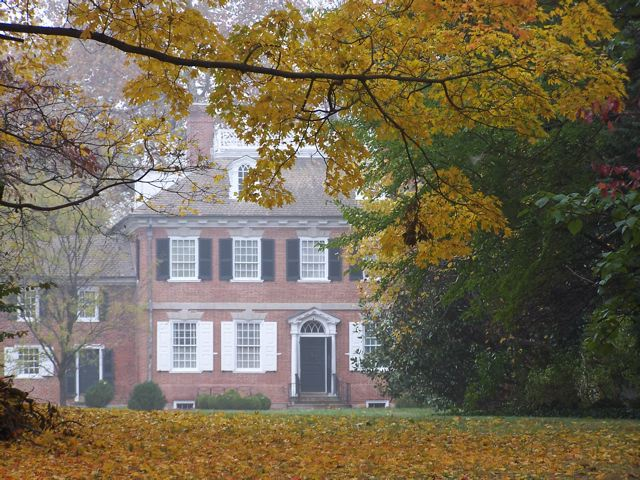Delaware might be the least populous state in the country, but it is brimming with important historical sites, people, and wildlife — the world’s largest horseshoe crab population — of the United States.
The second smallest state was the first of the original 13 colonies to join the Union, ratifying the constitution on Dec. 7, 1787 — hence its nickname, The First State.
At least 12,000 years ago, Paleo-Indians inhabited the area now known as Delaware. Before European settlement by the Swedes and Dutch in the early 17th century, various Indigenous Tribes, including the Algonquian, Lenape, and Nanticoke, lived and thrived in the area.
Visiting the Small Wonder, you might take some time at its beaches, including Lewes and Rehoboth, or spend some money enjoying the state’s sales-tax-free shopping. You might also swing by Delaware’s National Monuments and landmarks to learn about the state’s contributions to forming the nation. Read on to learn more!
Corbit-Sharp House: History buffs will love this destination! The Corbit-Sharp House is a historic house museum in Odessa, Delaware, and is a designated stop on the National Underground Railroad Network to Freedom. According to records, in 1845, an escaped enslaved man from Maryland named Sam was hidden by Mary Corbit in the attic of the home. Sam was not discovered, and he was able to make his way to freedom. The house, built from 1772 to 1774, is designed in the Philadelphia-Georgian architecture, characterized by symmetrical arrangements of windows and doors, side-gabled roofs, and rectangular brick buildings. It was declared a National Historic Landmark in 1967 and has been a museum since 1940. The house is now owned and operated by the Historic Houses of Odessa, which offers self-guided, family, group, and school tours of the property.

Photo Courtesy Historic Odessa
Lombardy Hall: The house is notable as the home of Gunning Bedford Jr., a signer of the U. S. Constitution. Bedford was a Delaware delegate at the Philadelphia Convention, where he gave an impassioned speech arguing for better legislative representation of small states. His effort contributed to the U.S. Senate eventually adopting per-state equal representation. Located in Fairfax, Delaware, Lombardy Hall was built around 1750, and Bedford purchased the home in 1785 — he was born and raised in Philadelphia. It was declared a National Historic Landmark in 1974. Today, Lombardy Hall is known as the Granite Corinthian Masonic Lodge, as it was purchased by the Granite Masonic Hall Company in 1967. The organization founded the Lombardy Hall Foundation the following year to preserve the property; it offers private guided tours to small groups of people on request.
Photo Courtesy Delaware
New Castle Historic District: Founded by Dutch settlers in the 1650s, the New Castle Historic District was recognized for its historical significance in 1967 when it was designated as a National Landmark. The Colonial-era area is approximately four blocks square in the center of New Castle, Delaware, with about 500 well-preserved buildings dating from the 17th to early 19th centuries — built between 1700 and 1940. Several historic structures are housed there, like The Amstel House, which is separately listed on the National Register of Historic Places. The New Castle Court House is also located in the district and is a part of the First State National Historical Park, a unit of the National Park System. When visiting, walk the Delaware History Trail, take in Amstel House’s beautiful gardens, or have a delicious meal in one of the many restaurants.
Photo Courtesy New Castle Historical Society





